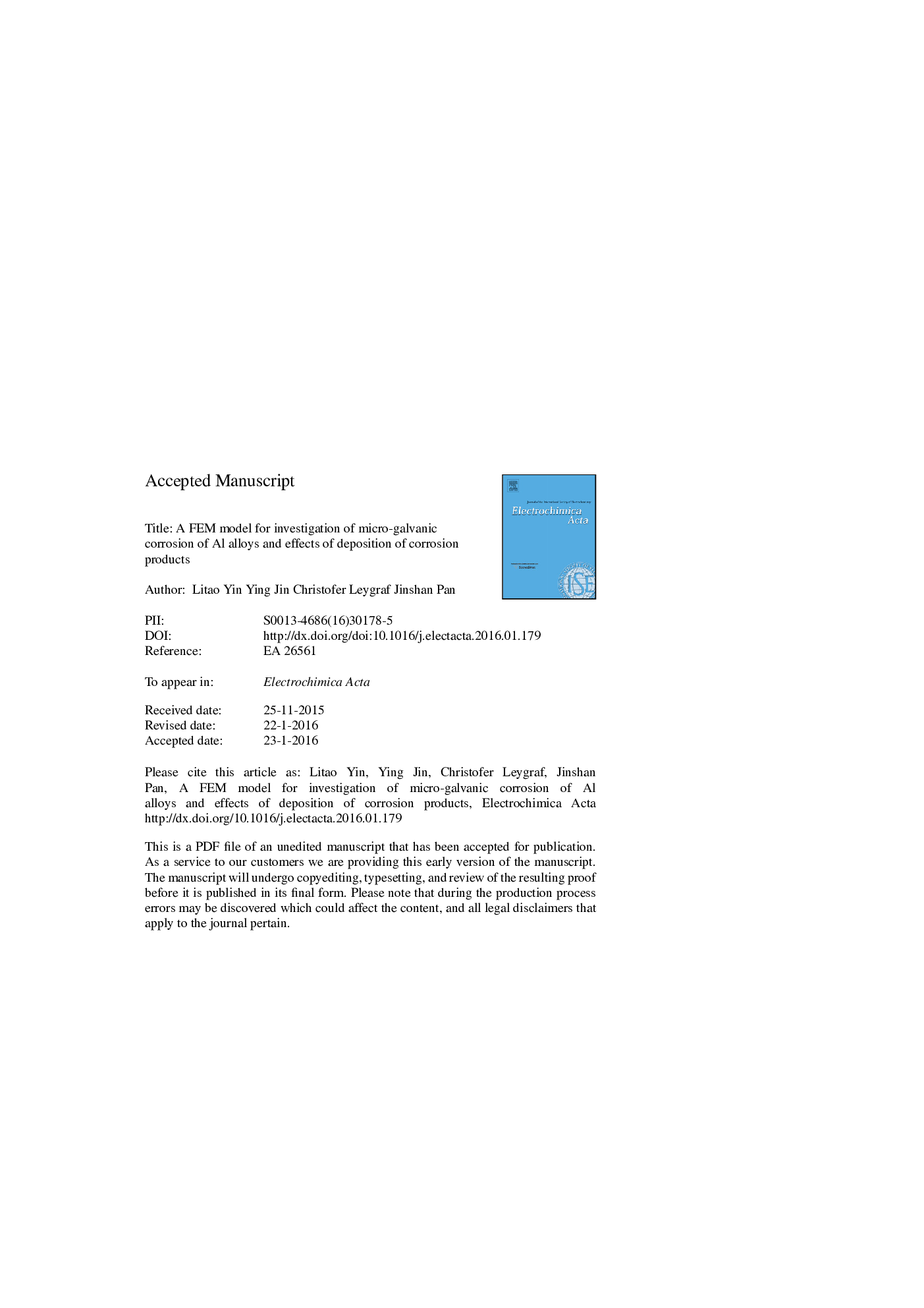| Article ID | Journal | Published Year | Pages | File Type |
|---|---|---|---|---|
| 6608625 | Electrochimica Acta | 2016 | 33 Pages |
Abstract
A finite element method model has been elaborated aiming at a deeper insight into the influence of microstructure on micro-galvanic corrosion of Al alloys. The model considers a dynamic corroding surface and takes into account kinetic data from local electrochemical reactions, transport of O2 and ionic species (e.g., Al3+, H+, Clâ), homogeneous reactions in the electrolyte, deposition of reaction products and its influence on both anodic and cathodic reactions. As a first step, an Al matrix with a micrometer-sized cathodic intermetallic particle exposed in 0.1Â M NaCl has been considered. The simulation predicts the dynamic changes of the corroding surface, and the flow and distribution of ionic species and of O2 in space and time. The calculated pH of the electrolyte inside and nearby the occluded corroding volume suggests the formation of insoluble Al(OH)3 on both the cathodic and anodic areas. This results in blocking effects of anodic and cathodic reactions and in eventual termination of the micro-galvanic corrosion. The predicted deposition of corrosion product is in good agreement with in-situ atomic force microscopy measurements.
Related Topics
Physical Sciences and Engineering
Chemical Engineering
Chemical Engineering (General)
Authors
Litao Yin, Ying Jin, Christofer Leygraf, Jinshan Pan,
